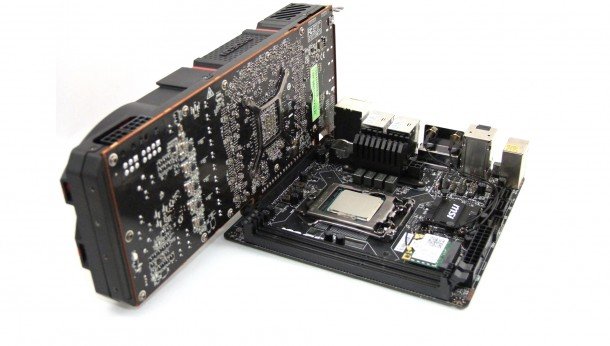The MSI Z87I: a mighty-affordable mini motherboard

I have to admit I'm an absolute sucker for a good mini-ITX motherboard, and the MSI Z87I is one of the best I've come across. There's something wonderful about pulling a tiny mobo from its packaging knowing that it's capable of forming an immensely powerful gaming rig. There's also something rather gratifying about jamming a massive graphics card into that PCIe slot and seeing it dwarfing the board it's plugged in to.

I've been checking out a number of mini-ITX motherboards recently and have been stunned at just how competitive the MSI Z87I is compared with the likes of Asus Republic of Gamers Maximus VI Impact.
The RoG board is the king of all mini-ITX boards right now. It delivers the fastest performance out of the box and offers a great little package, including WiFi, next-gen NGFF SSD support and a dedicated SupremeFX soundcard. Obviously such a package comes at a cost and you'll find it for around £175/$225. That's a lot when you're also going to have to spend a good chunk on a Haswell CPU to stick inside it. The MSI Z87I though is just £99/$140, which is an absolute bargain considering what you get.
It's not as heavy on the extras as the Asus board, but still packs WiFi out of the box as well as a full complement of SATA 6Gbps ports, a load of USB 3.0 connections and support for seriously high-performance memory too - up to 3,000MHz.
It's also only just shy of the Asus RoG board when it comes to straight-line performance too. The Maximus VI Impact is a better gaming board, offering higher average and minimum frame rates, but not by much. And when you consider this board is a good deal cheaper too you'll see it would actually allow you to drop an Intel i7-4770K into the MSI board for the same price as you'd pay for the Asus and an i5-4670K.

Keep up to date with the most important stories and the best deals, as picked by the PC Gamer team.

Dave has been gaming since the days of Zaxxon and Lady Bug on the Colecovision, and code books for the Commodore Vic 20 (Death Race 2000!). He built his first gaming PC at the tender age of 16, and finally finished bug-fixing the Cyrix-based system around a year later. When he dropped it out of the window. He first started writing for Official PlayStation Magazine and Xbox World many decades ago, then moved onto PC Format full-time, then PC Gamer, TechRadar, and T3 among others. Now he's back, writing about the nightmarish graphics card market, CPUs with more cores than sense, gaming laptops hotter than the sun, and SSDs more capacious than a Cybertruck.

